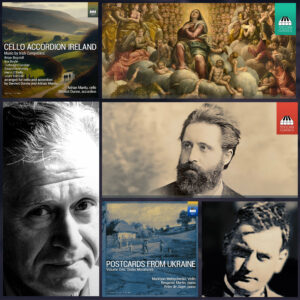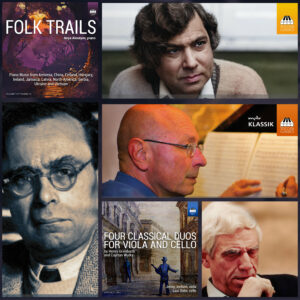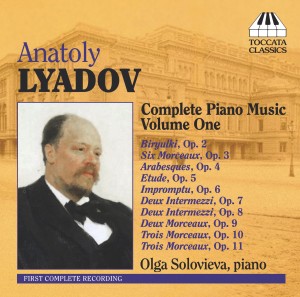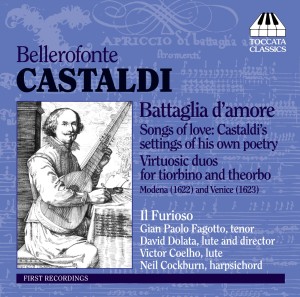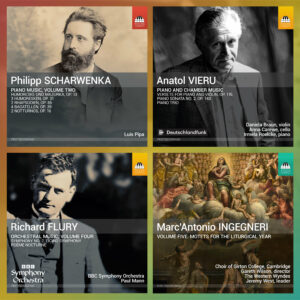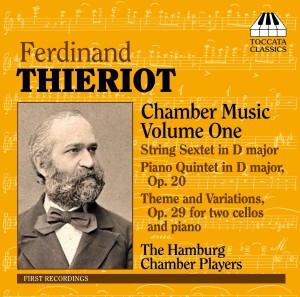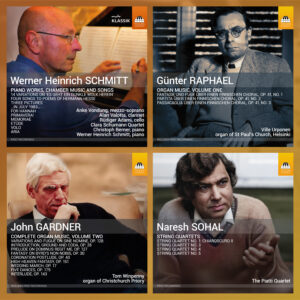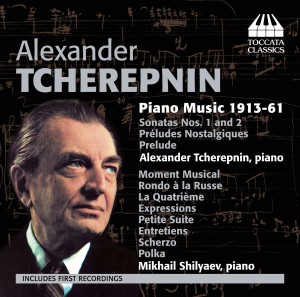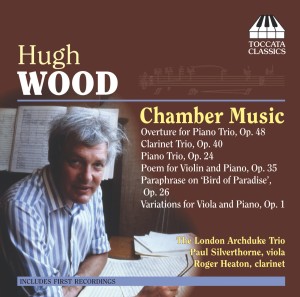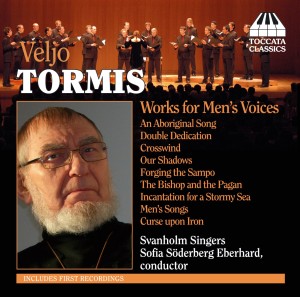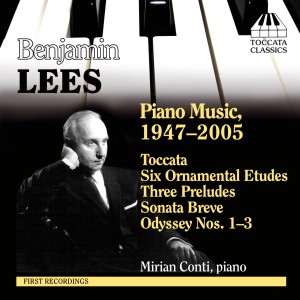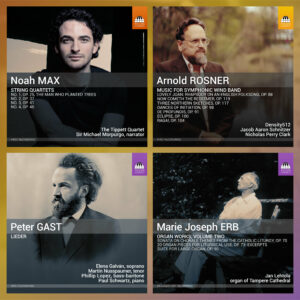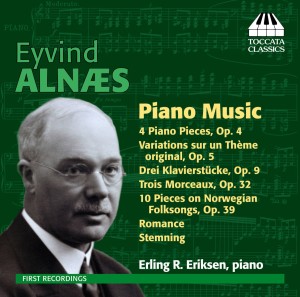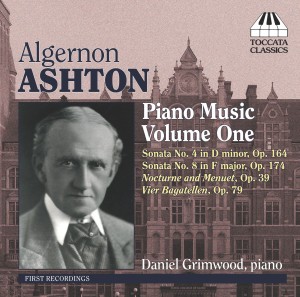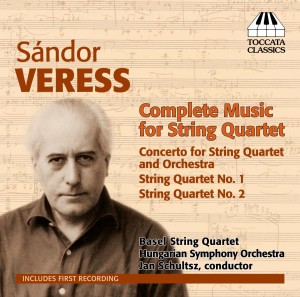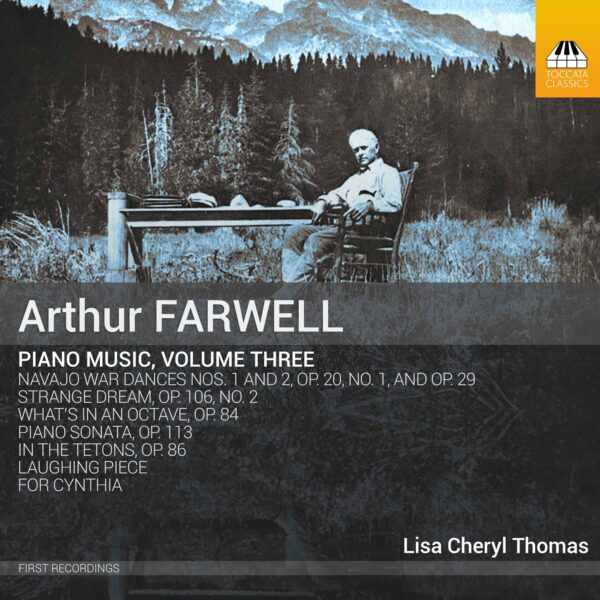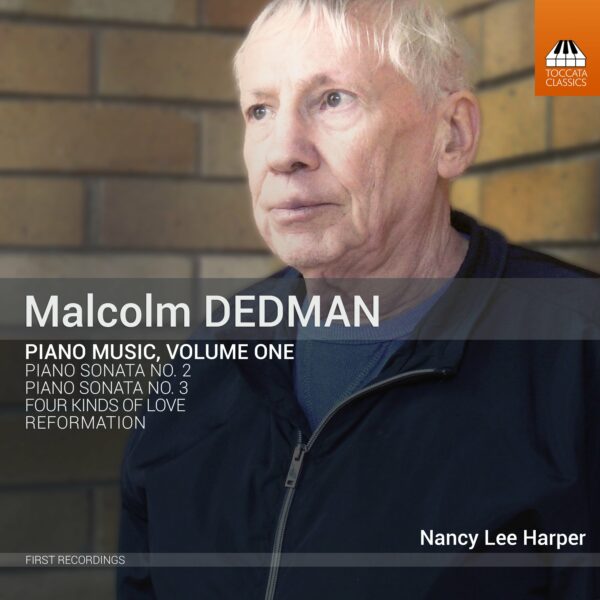Search Results for "Space Wolf: The First Omnibus mp3 torrent" – Page 45
May 2025 Double Bundle
Included in this bundle:
April 2025 Double Bundle
Included in this bundle:
Anatoly Lyadov: Complete Piano Music, Volume One
Anatoly Lyadov (1855-1914) is remembered these days chiefly for his Musical Snuffbox, once a favourite encore. Lyadov was indeed a miniaturist — but a far more productive one than his reputation for laziness suggests. His substantial output for piano — never previously recorded in its entirety — reveals a composer with an energetic keyboard manner reminiscent of Schumann, often coloured with a hint of Russian folk-music.
Olga Solovieva, piano
Bellerofonte Castaldi: Battaglia d’amore
The Modenese firebrand, lute virtuoso, composer, poet and artist Bellerofonte Castaldi (1580-1649) — the Bob Dylan and Leonard Cohen of his day — set his own poems to his own music in a lyrical style that captured the dynamism of the emerging Baroque. Castaldi's dance-songs and madrigals for one, two or more voices — drawn from his monody collection Primo mazzetto (Venice, 1623) and the manuscript Modena 239 (c. 1670) — framed his hopes, dreams and disappointments with fresh and unforgettable melodies. The duos for theorbo and tiorbino, a tiny theorbo that Castaldi himself invented, are contrapuntal showpieces from his Capricci a due stromenti (Modena, 1622), a highly unusual collection of theorbo solos and duos, songs and poetry that he himself engraved and decorated with his own freehand artwork.
Gian Paolo Fagotto, tenor
David Dolata, lute, director
Victor Coelho, lute
Neil Cockburn, harpsichord
Il-Furioso, ensemble
May 2025 Bundle
Included in this bundle:
Ferdinand Thieriot: Chamber Music, Volume One
Ferdinand Thieriot (1836-1919) was, like Johannes Brahms, a student of Eduard Marxsen in Hamburg; Brahms remained a friend in later years — and Thieriot's music does indeed have a Brahmsian warmth and richness. His works, the chamber music especially, was popular during his own lifetime but since his death in 1919 it has been totally forgotten — not least because the archives containing his manuscripts were taken to Leningrad after the Second World War. It is time to rediscover this generous and big-hearted music, which overflows with memorable melodies.
Piano Quintet, Op. 20
Theme and Variations, Op. 29
String Sextet in D major
April 2025 Bundle
Included in this bundle:
Alexander Tcherepnin: Piano Music 1913-61
This unusual album begins with archival recordings, in excellent sound, of the Russian-born composer-pianist Alexander Tcherepnin (1899-1977) playing some of his most memorable piano music. The early Sonata No. 1 (1918-19) is a brilliant, virtuosic study in dramatic Slavic romanticism; the atmospheric late Sonata No. 2 (1961), never commercially recorded by the composer, stands as a paragon of elegant modernism in continuous thematic evolution. The second part of the CD, performed by the Russian pianist Mikhail Shilyaev, presents a selection of attractive, rarely heard works from various periods in Tcherepnin's career, further illustrating his Prokofiev-like fondness for spiky humour, pungent harmony and crisp melody.
Alexander Tcherepnin, piano
Mikhail Shilyaev, piano
Hugh Wood: Chamber Music
Hugh Wood, born in Lancashire in 1932, is one of Britain's most distinguished composers, his music marrying expressionist power and lyrical elegance. Although Wood has a number of large-scale pieces to his credit, he prefers the intimacy of chamber music and these six works ranging from his Op. 1, written in 1958, to Overture for Piano Trio of 2005 — expertly balance formal clarity, rigorous craftsmanship and a high charge of energy.
Paul Silverthorne, viola
Roger Heaton, clarinet
London Archduke Trio, piano trio
Nathaniel Vallois, violin
Gabriella Swallow, cello
Charles Wiffen, piano
Veljo Tormis: Works for Men’s Voices
The Estonian composer Veljo Tormis (born in 1930) has carved a unique position for himself in contemporary music. By marrying the quasi-minimalist rhythmic vigour of Estonian runic singing – a tradition some 3,000 years old – with the extended techniques of modern choral writing, he has created a body of music tingling with excitement, energy and power. Many of the works on this CD – where the composer, playing shaman drum and anvil, joins one of Scandinavia’s brightest young choirs – draw on folk sources in a reaffirmation of Estonian identity; others evoke the forces of nature as a metaphor for political upheaval.
Svanholm Singers, choir
Sofia Söderberg Eberhard, conductor
Charles-Valentin Alkan: Complete Piano Duos and Duets
The piano works of Charles-Valentin Alkan (1813-88) are among the most demanding ever written — but they can also gleam with a fierce joy and twinkle with mischievous humour, so it's hardly surprising to find his works for piano duet bubbling with freewheeling energy. The two works for pedal piano — transcribed here for two pianos by Roger Smalley — show a more solemn side to this devoutly religious composer, though they, too, have their own charge of excitement and Alkan's trademark eccentric originality.
Anthony Goldstone and Caroline Clemmow, piano duo, piano duet
Benjamin Lees: Piano Music, 1947-2005
Benjamin Lees (1924–2010) was one of the senior figures in American music, with a large catalogue of powerful and inventive music to his credit. The works on this CD span almost sixty years of compositional activity but are unified by a number of consistent stylistic features: a wiry and muscular athleticism with its distant roots in Prokofiev and Bartók, a quasi-Impressionist awareness of piano sonority, a tough, no-nonsense sense of humour and an exhilarating onward drive.
Mirian Conti, piano
March 2025 Bundle
Included in this bundle:
Eyvind Alnæs: Piano Music
The piano music of the Norwegian composer Eyvind Alnæs (1872–1932) shows the influence of Grieg and likewise marries an essentially lyric style with the melodies and rhythms of Norwegian folk-music; the later pieces add an awareness of Debussy and French Impressionism. The works on this CD – none of them recorded before – have an immediate appeal and easy charm, although Alnæs can also indulge in stormy virtuosity.
Erling R. Eriksen, piano
Algernon Ashton: Piano Music, Volume One
Algernon Ashton, born in Durham in 1859, is one of the best-kept secrets in British music. His generous output of piano music includes no fewer than eight sonatas, none of them ever recorded before now. Rutland Boughton wrote that Ashton 'seems to pour out great musical thought as easily as the lark trills its delight in cloudland’, and though Ashton’s piano writing, which lies downstream from Chopin and Brahms, is phenomenally difficult, what strikes the ear is its spontaneity and melodic richness.
Daniel Grimwood, piano
Sándor Veress: Complete Music for String Quartet
Sándor Veress (1907-99) was born in Kolozsvár, then in Hungary (it is now Cluj-Napoca in Romania), but spent the last half-century of his life in Switzerland as an exile from Communism. In the 1930s he worked as Bartók's research assistant in his work on Hungarian folksong, with results audible in the two early string quartets. By the time of the Concerto for String Quartet and Orchestra three decades later, Veress had developed a lean and muscular style, incorporating elements of modernism but retaining a powerful sense of onward momentum, expressed in an original voice which combines head and heart in an exhilarating blend of freewheeling invention, fantasy and wit.
Basel String Quartet, string quartet
Hungarian Symphony Orchestra, orchestra
Jan Schultsz, conductor
Your Basket
Stay In the Know
JOIN THE TOCCATA NEWSLETTER
"*" indicates required fields
By visiting our site, you agree to our privacy policy regarding cookies, tracking statistics, etc.
